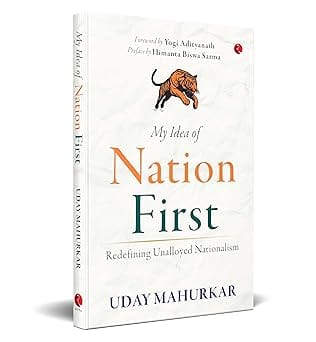WELCOME TO MIDLAND BOOK SHOP!
SHOP FOR
-
Non-ficton
- Non-ficton
-
Contemporary Fiction
- Contemporary Fiction
-
Children
- Children
-
Comics & Graphic Novels
- Comics & Graphic Novels
-
Non-Fiction
- Non-Fiction
-
Fiction
- Fiction
Shop No.20, Aurobindo Palace Market, Hauz Khas, Near Church +91 9818282497 | 011 26867121
110016
New Delhi
IN
Midland The Book Shop ™
Shop No.20, Aurobindo Palace Market, Hauz Khas, Near Church +91 9818282497 | 011 26867121
New Delhi,
IN
+919871604786
https://www.midlandbookshop.com/s/607fe93d7eafcac1f2c73ea4/69426f22d817d650d08637b3/black-yellow-simple-bold-youtube-channel-logo-400-x-100-px--480x480.png"
[email protected]
9789350025475
675040015052f100249021e7
Caste And Social Stratification Among Muslims In India
https://www.midlandbookshop.com/s/607fe93d7eafcac1f2c73ea4/675040025052f100249021ef/71zlxg-av1l-_sy385_.jpg
9789350025475
The presence of caste among Muslims in India has been recognised for a long time but the subject has so far been discussed almost exclusively on the basis of data contained in the decennial census and reports of British administrative officials. There have been few empirical studies on the subject. This collection, the first of a four-volume series of books on the social and cultural life of Muslims in India, for the first time brings together empirical studies of caste among Muslims in different parts of the country. The focus of the papers is on internal as well external aspects of castes. The authors discuss the features generally associated with the caste system among the groups studied as well as analyse their traditional association with a particular occupation, ritual and economic obligations, mechanism of dispute settlement, and the nature of the relationship between the group and the individual. The papers dealing with inter-caste relations focus on hierarchical grading since hierarchy is regarded as one of the salient features of a castes living in a particular locality are taken up with the intention of analysing the interactional behaviour of the various groups and studying the principles of social ranking among them. Both the aspects of caste are discussed against the background of the contradictions between Koranic injunctions against any kind of status differentiation and the realities of living in a stratified society.
out of stock
INR
556
1
1
Email ID already exists!
Your Current password is incorrect
Password Updated Successfully
Thanks for your Feedback
Caste And Social Stratification Among Muslims In India
ISBN:
9789350025475
₹556
₹695
(20% OFF)
SIZE GUIDE
Back In Stock Shortly - Fill The Book Request Form
Sold By:
Hauz Khas - Aurobindo Market
Details
- ISBN: 9789350025475
- Author: Imtiaz Ahmad
- Publisher: Aakar Books
- Pages: 348
- Format: Paperback
Book Description
The presence of caste among Muslims in India has been recognised for a long time but the subject has so far been discussed almost exclusively on the basis of data contained in the decennial census and reports of British administrative officials. There have been few empirical studies on the subject. This collection, the first of a four-volume series of books on the social and cultural life of Muslims in India, for the first time brings together empirical studies of caste among Muslims in different parts of the country. The focus of the papers is on internal as well external aspects of castes. The authors discuss the features generally associated with the caste system among the groups studied as well as analyse their traditional association with a particular occupation, ritual and economic obligations, mechanism of dispute settlement, and the nature of the relationship between the group and the individual. The papers dealing with inter-caste relations focus on hierarchical grading since hierarchy is regarded as one of the salient features of a castes living in a particular locality are taken up with the intention of analysing the interactional behaviour of the various groups and studying the principles of social ranking among them. Both the aspects of caste are discussed against the background of the contradictions between Koranic injunctions against any kind of status differentiation and the realities of living in a stratified society.
User reviews
NEWSLETTER
Subscribe to get Email Updates!
Thanks for subscribing.
Your response has been recorded.

India's Iconic & Independent Book Store offering a vast selection of books across a variety of genres Since 1978.
"We Believe In The Power of Books" Our mission is to make books accessible to everyone, and to cultivate a culture of reading and learning. We strive to provide a wide range of books, from classic literature, sci-fi and fantasy, to graphic novels, biographies and self-help books, so that everyone can find something to read.
Whether you’re looking for your next great read, a gift for someone special, or just browsing, Midland is here to make your book-buying experience easy and enjoyable.
We are shipping pan India and across the world.
For Bulk Order / Corporate Gifting
 +91 9818282497 |
+91 9818282497 |  [email protected]
[email protected]
Click To Know More
INFORMATION
POLICIES
ACCOUNT
QUICK LINKS
ADDRESS
Midland Book Shop - Hauz Khas
Shop No.20, Aurobindo Palace Market, Near Church, New Delhi
Shop No.20, Aurobindo Palace Market, Near Church, New Delhi














